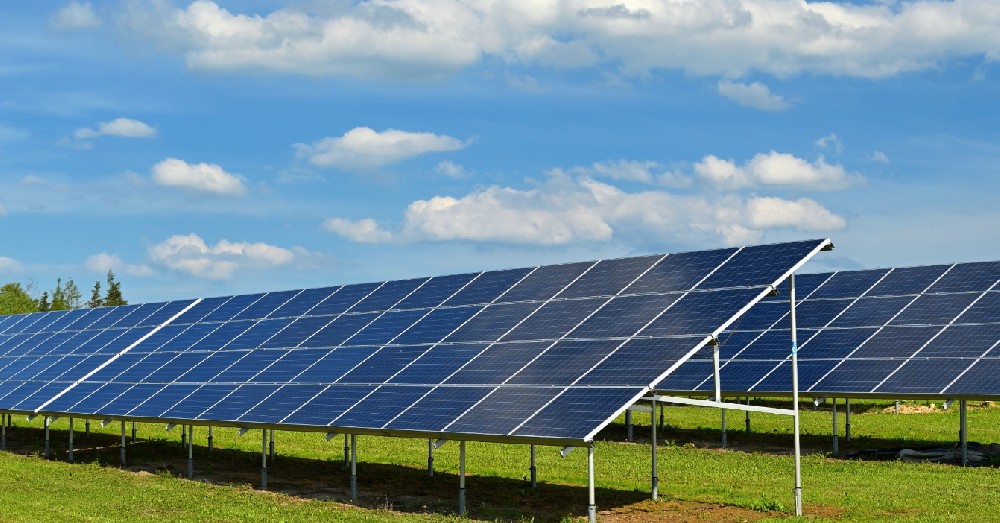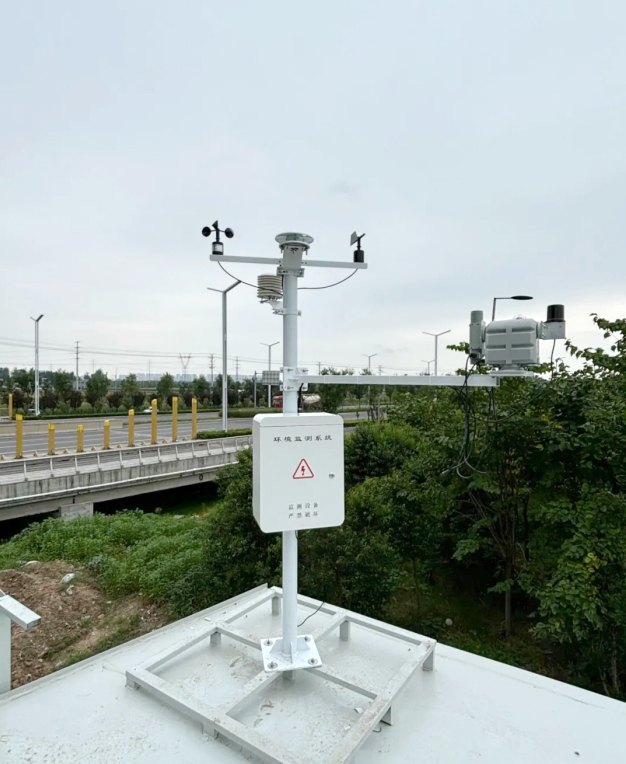

— Blogs —
—Products—
 Consumer hotline +8618073152920
Consumer hotline +8618073152920 WhatsApp:+8615367865107
Address:Room 102, District D, Houhu Industrial Park, Yuelu District, Changsha City, Hunan Province, China
Product knowledge
Time:2025-03-28 15:42:36 Popularity:76
A photovoltaic weather station (or photovoltaic power station meteorological instrument) is a high-precision monitoring device specifically designed for photovoltaic power systems. It aims to collect key meteorological data in real-time, supporting the operation of solar power stations, agricultural management, and various other industries. By combining green energy technology with advanced sensor systems, it not only drives the sustainable development of the photovoltaic industry but also demonstrates extensive application potential across multiple fields. This article will introduce the definition, operating mechanism, core advantages, and main application scenarios of photovoltaic weather stations in detail.

A photovoltaic weather station is an environmental monitoring tool tailor-made for photovoltaic power stations. It can measure and record key parameters such as temperature, humidity, wind speed, wind direction, atmospheric pressure, and solar radiation intensity in real-time. These data are essential for evaluating the power generation efficiency of photovoltaic systems, predicting energy output, and optimizing maintenance strategies. Unlike traditional weather stations, photovoltaic weather stations are powered by solar energy and are equipped with remote transmission and intelligent analysis functions, making them a "smart assistant" in photovoltaic power generation.
Its compact design and strong adaptability make it suitable for deployment in various environments, from deserts to coastal areas. By providing accurate and real-time meteorological information, it helps users improve energy utilization efficiency and respond to natural changes.
The operation of a photovoltaic weather station depends on the collaboration of the following core components:
- Components: Includes solar panels, charge controllers, and batteries.
- Principle: The solar panel converts sunlight into electrical energy, and the charge controller manages the charging and discharging process of the battery to ensure stable operation even on cloudy days or at night. This self-sustaining energy model eliminates the need for external power sources, reducing operational costs.
- Types: Temperature sensors, humidity sensors, wind speed and direction sensors, barometric pressure sensors, and radiation sensors (measuring total, direct, and diffuse radiation).
- Function: These sensors continuously monitor environmental parameters, such as solar radiation, which determines the power generation potential, wind speed and direction, which affect equipment safety, and temperature and humidity, which influence the performance of photovoltaic panels.
- The data collector integrates sensor signals, performs preliminary processing, and stores the data. Then, it uploads the data to the cloud platform or data center via wireless networks (such as 4G or Wi-Fi), allowing users to access it remotely. This real-time transmission ensures the timeliness of the information.
- Users can view real-time data or historical trends through the interface, and the system can also analyze power generation performance or predict weather changes using algorithms. For example, radiation data can be used to estimate daily power generation, and abnormal wind speeds can trigger maintenance alerts.

Photovoltaic weather stations stand out in practical applications due to their unique design and technical features:
Powered entirely by solar energy, with no need for fossil fuels, they reduce carbon emissions and align with global green energy trends.
Equipped with high-precision sensors (such as radiation measurement with an error margin of less than ±5%), they provide reliable data, avoiding errors in manual observations. They can also operate stably under extreme conditions like high temperatures, low temperatures, or strong winds.
Data is uploaded in real-time, allowing users to view it anytime via mobile phones or computers, greatly enhancing management flexibility and response speed.
The highly efficient photovoltaic conversion technology maximizes solar energy utilization, reduces energy consumption, and supports long-term operation.
The system can predict potential risks (such as strong winds or decreased radiation) based on meteorological data and automatically send alerts, helping users optimize operations or minimize losses.
Sensors can be customized based on specific needs (such as adding rainfall monitoring). The installation is simple, and the maintenance cost is low, making it suitable for diverse scenarios.
It provides large-capacity data storage, supporting long-term trend analysis, which provides a basis for performance evaluation and planning.

The application range of photovoltaic weather stations is wide, covering energy, agriculture, scientific research, and many other industries:
- Real-time Monitoring: Measures parameters such as solar radiation and wind speed to assess power generation efficiency and optimize the orientation of photovoltaic panels. For instance, adjusting the angle in cloudy weather can enhance energy capture.
- Risk Prevention: Provides early warnings in extreme weather conditions (such as heavy rain or strong winds), protecting equipment and minimizing downtime.
- Data Support: Provides scientific data to power station managers, optimizing power generation planning and maintenance scheduling.

- Provides temperature, humidity, and radiation data to guide irrigation and planting. For example, monitoring soil moisture in dry regions can optimize water resource allocation and improve crop yields. Some models can also measure soil parameters (such as pH), supporting precision agriculture.
- Weather Forecasting: Provides high-precision data to improve forecasting accuracy.
- In rooftop photovoltaic systems, solar energy carports, and other scenarios, it monitors lighting conditions and wind environments, providing data for design and operation. For example, optimizing the layout of photovoltaic systems in commercial buildings can improve energy savings.
- Supports remote monitoring, reducing operational costs. In urban design, analyzing wind and radiation data can optimize building ventilation and green space layout, improving the urban heat island effect.

As the intelligent core of the green energy field, the photovoltaic weather station, with its environmental friendliness, high precision, and multifunctionality, provides strong support for photovoltaic power stations and various other industries. From optimizing power generation efficiency to ensuring aviation safety and promoting agricultural and environmental research, its multi-domain applications demonstrate immense potential. In the global energy transition, photovoltaic weather stations are not only a reflection of technological advancement but also a key driver for sustainable development. As innovation continues to progress, they will continue to inject new vitality into clean energy and smart management.
NBL-W-SRS-Solar-radiation-sensor-instruction-manual-V4.0.pdf
NBL-W-HPRS-Solar-Radiation-Sensor-Instruction-Manual-V3.0.pdf
Prev:Photovoltaic Meteorological Station: The Intelligent Core of Green Energy
Next:Automatic Weather Stations and Photovoltaic Power Generation Meteorological Stations
Related recommendations
Sensors & Weather Stations Catalog
Agriculture Sensors and Weather Stations Catalog-NiuBoL.pdf
Weather Stations Catalog-NiuBoL.pdf
Related products
 Combined air temperature and relative humidity sensor
Combined air temperature and relative humidity sensor Soil Moisture Temperature sensor for irrigation
Soil Moisture Temperature sensor for irrigation Soil pH sensor RS485 soil Testing instrument soil ph meter for agriculture
Soil pH sensor RS485 soil Testing instrument soil ph meter for agriculture Wind Speed sensor Output Modbus/RS485/Analog/0-5V/4-20mA
Wind Speed sensor Output Modbus/RS485/Analog/0-5V/4-20mA Tipping bucket rain gauge for weather monitoring auto rainfall sensor RS485/Outdoor/stainless steel
Tipping bucket rain gauge for weather monitoring auto rainfall sensor RS485/Outdoor/stainless steel Pyranometer Solar Radiation Sensor 4-20mA/RS485
Pyranometer Solar Radiation Sensor 4-20mA/RS485
Screenshot, WhatsApp to identify the QR code
WhatsApp number:+8615367865107
(Click on WhatsApp to copy and add friends)